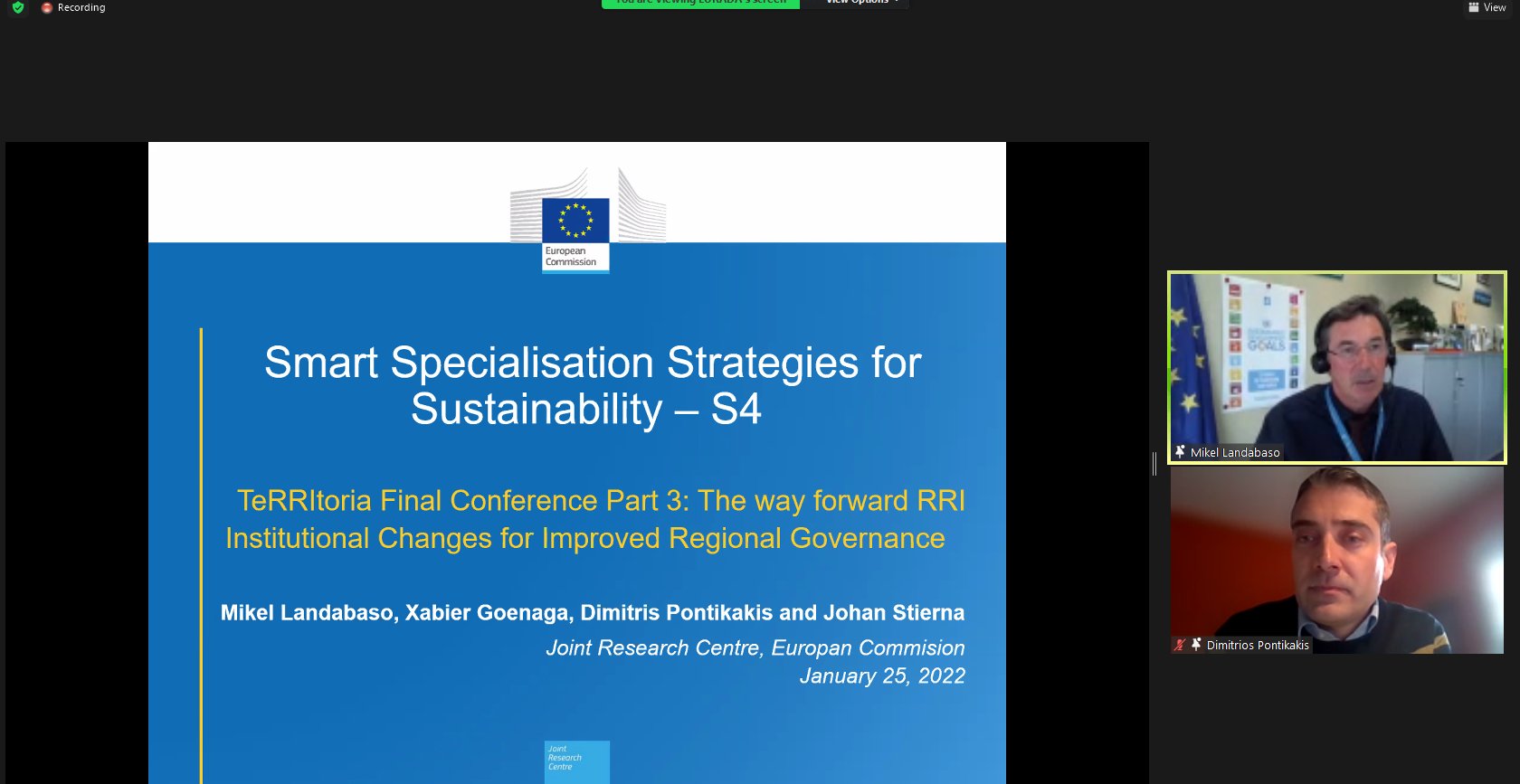Networking in the context of Territorial RRI and its effects
Looking at the landscape of Responsible Research and Innovation (RRI) initiatives and research, a distinct understanding can be gained of the networking processes, which suggests further communication and relevant relationship-building activities. Evidently, establishing networks allows for territorial, cross-regional, and possibly international practices to evolve and stimulate learning processes through an extroverted diffusion of experience and knowledge. Initially, networks are created and maintained through the participation of different actors able to share existing knowledge and contribute to the communication and dissemination of new knowledge. It is therefore a process that can bring about several potential benefits, where mutual interest and like-minded efforts can contribute to the initiation of new practices and ideas of common interest.
In this light, different outcomes can be achieved when referring to the effects of networking both in general, but also regarding RRI projects and further co-operation and dissemination activity. At first, the co-operating networks – comprised of several consortium partners – can detect and pass on information on regional RRI groups and organisations available. Each of them will have the ability to report this information within the context of their own regional adaptation in a more efficient manner, as they will undoubtedly have a more authentic view and a more intimate knowledge of their own environment and R&I ecosystem. The networking effects in this case constitute a contributing factor during the earlier parts of a project. But what about the additional routes during the later stages of the project lifespan? Research projects like TeRRItoria – under the SwafS-14 call for Supporting the development of territorial Responsible Research and Innovation – are dedicated to understanding and implementing RRI practices at regional level. These projects are based on concrete schedules and detailed predefined agendas, thus operating within a demanding time frame of 3-4 years.
With reference then to networking effects among ‘sister’ (and not only) EU projects, the knowledge and experience-based recommendations of older projects may allow younger ones to integrate additional and improved methodologies or possible mitigation measures towards the obstacles emerging in their work. Networking in this case could result into a beneficial learning experience, by which different project leaders and researchers will be informed by means of the sharing of solid information which assists them in achieving a less-time consuming preparatory and implementation phase. This further contributes to another aspect of how RRI projects can work. The target dissemination stages also require certain project outcomes to be communicated. This way and by networking, stakeholders continue to share not only the final outputs of the project, but important experiences gained at the beginning or the middle of the project –offering added-value to the continuation of RRI-related programs.
Networks may be organised according to different objectives and for various applications. Territorial research and implementation progress could foster the creation of a network by including different stakeholders from within the region. After a scheduled engagement of regional research centres, academics, NGOs, or businesses, new ‘connections’ can then be formed, including targeted municipalities and civil servants. A next step could involve inter-regional networks with other municipalities, smaller or larger-scale regions, or even expand in discussion among different countries. This core part of disseminating the project’s experience and outcomes can also inspire future implementation initiatives undertaken by different actors regarding RRI. Through the consequent reproduction of ideas and practices, networks bring a prevalence of practices which could ultimately strengthen the RRI presence in other regions.
Regarding implemented regional practices, the spatial implementation has the potential to work as a good factor or advocate in terms of networking. A possible effect of territorial RRI progresses under the application or dissemination stages could reach the additional network (whether in a simpler or a more specific way) of the already existing networks. Namely, word of mouth has proven to be an excellent advisory and often exploratory channel of news and information related to experience. If included actors have active connections with opinion leaders or relevant initiators, they could potentially spark new ideas and broaden perceptions on a subject. Building on the concept of interactive connection, good news and ultimately admissible initiatives can inspire all kinds of information-sharing to wider outlets. Whether this generates the capitalisation of peer influence or engages other actors, further RRI potentials could be unveiled within different regions.
Networks are relations to attend for and maintain. In a usual spam of active progress and during the beginning or implementation of a project, the previously acquired knowledge could potentially be forgotten. Catering to the engaging activity and keeping the connection valuably alive can spur a meta-effect of networks. This is especially important when it comes to RRI goals. In this way, much of the information and many of the outcomes, challenges and mitigation responses are established and therefore, keep on providing valuable input. This pertains to keeping the knowledge alive and continuing from there while also moving forward. The effect here is the eventual life cycle of these exact networks while expanding their maturity and growth, which can also work as a driver for further connections, as previously stated.
Overall, networking initiatives are a fruitful way to enhance different aspects of a project’s valuable input and output, while aiming at a more connective and inclusive approach. The effects of networking can always derive from different points, whether these points are planned or are simply emerging chances utilised by an active approach and for further growth. Creating networks and working on them can keep RRI integration in a dynamic state and reach out for mutual learning to a maximum effect. Lastly, stronger participation in networks could shed light on the subject alone; this is by discovering and looking into the networking experiences gathered. Additional benefits, accomplishments or challenges of networking are lessons able to assist future actions on science, research, innovation and RRI.
 | Article written by Efthalia Kallia – SEERC Efthalia Kallia is a Junior Research Assistant at the South East European Research Centre (SEERC), working on RRI-related projects funded under H2020 |
 | in collaboration with George Eleftherakis – SEERC George Eleftherakis is a Full Professor and the Director of the PhD program at CITY College, University of York Europe Campus in Thessaloniki, Greece, and a Senior Researcher at the South East European Research Centre (SEERC). |





